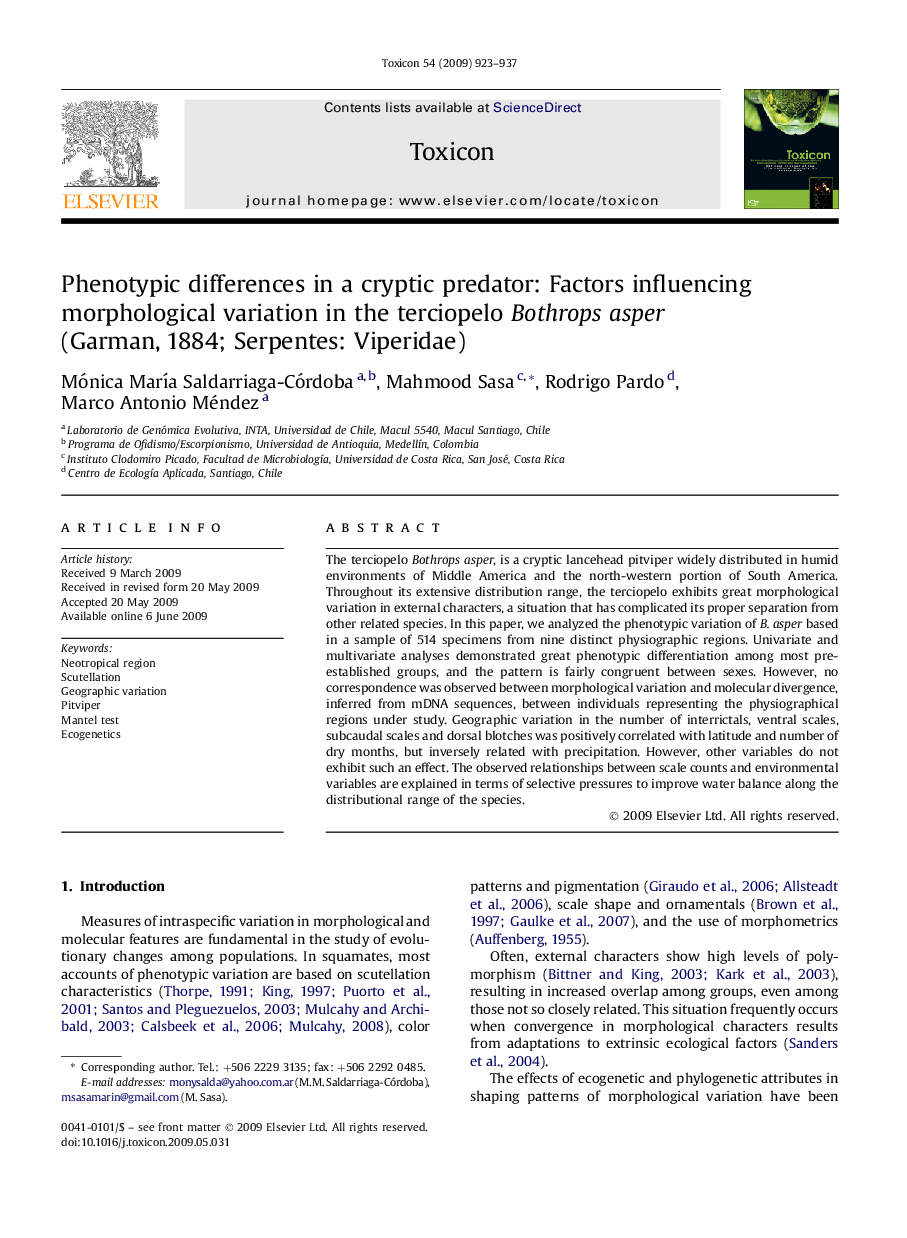| Article ID | Journal | Published Year | Pages | File Type |
|---|---|---|---|---|
| 2065032 | Toxicon | 2009 | 15 Pages |
Abstract
The terciopelo Bothrops asper, is a cryptic lancehead pitviper widely distributed in humid environments of Middle America and the north-western portion of South America. Throughout its extensive distribution range, the terciopelo exhibits great morphological variation in external characters, a situation that has complicated its proper separation from other related species. In this paper, we analyzed the phenotypic variation of B. asper based in a sample of 514 specimens from nine distinct physiographic regions. Univariate and multivariate analyses demonstrated great phenotypic differentiation among most pre-established groups, and the pattern is fairly congruent between sexes. However, no correspondence was observed between morphological variation and molecular divergence, inferred from mDNA sequences, between individuals representing the physiographical regions under study. Geographic variation in the number of interrictals, ventral scales, subcaudal scales and dorsal blotches was positively correlated with latitude and number of dry months, but inversely related with precipitation. However, other variables do not exhibit such an effect. The observed relationships between scale counts and environmental variables are explained in terms of selective pressures to improve water balance along the distributional range of the species.
Related Topics
Life Sciences
Biochemistry, Genetics and Molecular Biology
Biochemistry, Genetics and Molecular Biology (General)
Authors
Mónica MarÃa Saldarriaga-Córdoba, Mahmood Sasa, Rodrigo Pardo, Marco Antonio Méndez,
